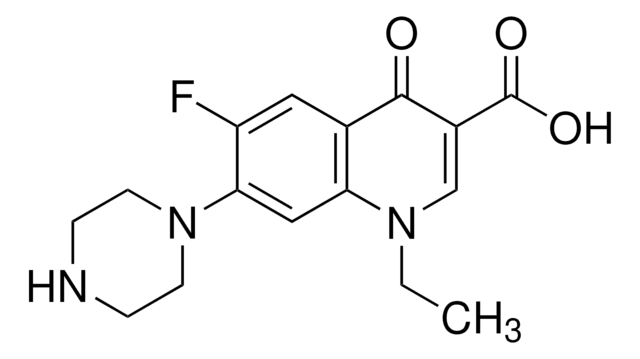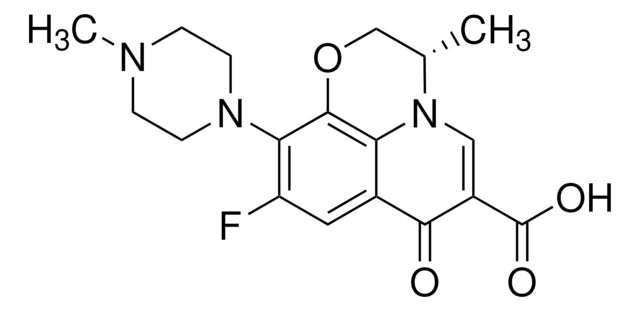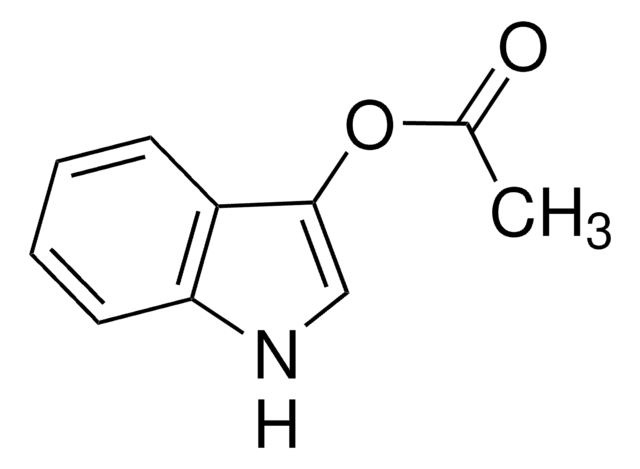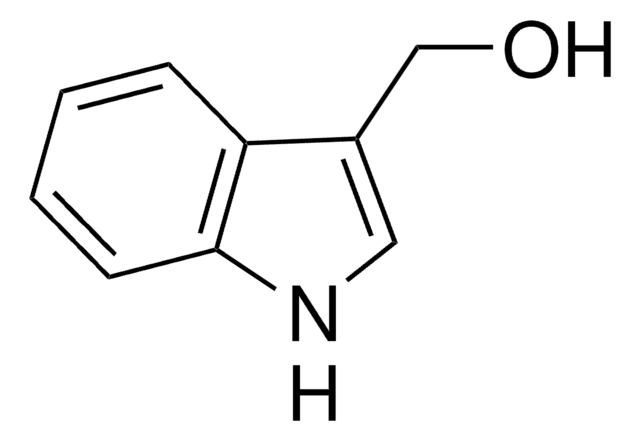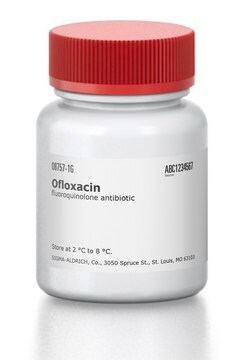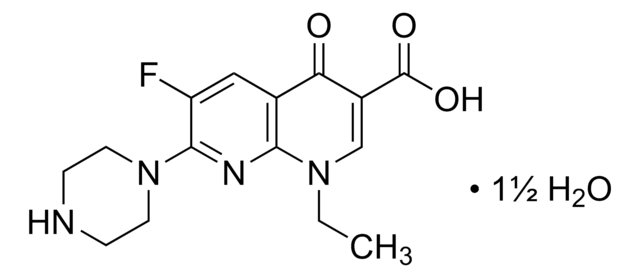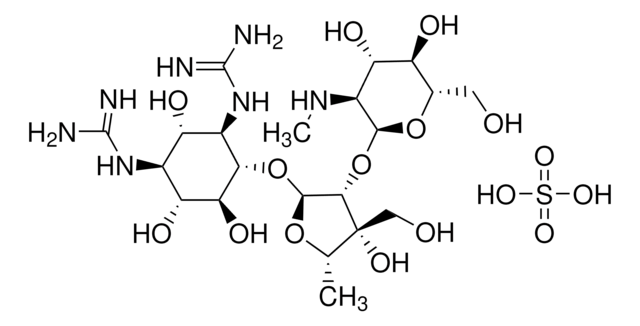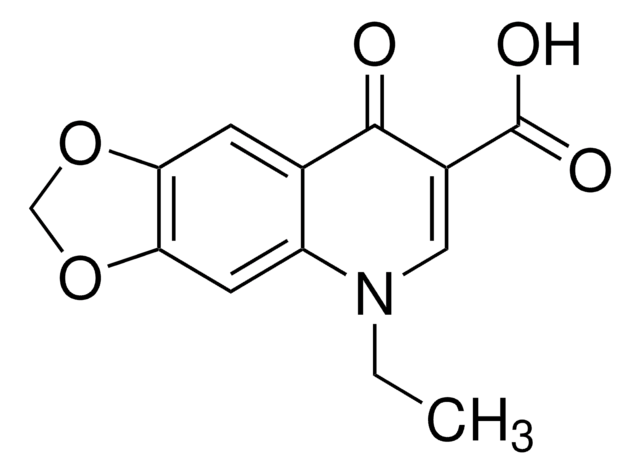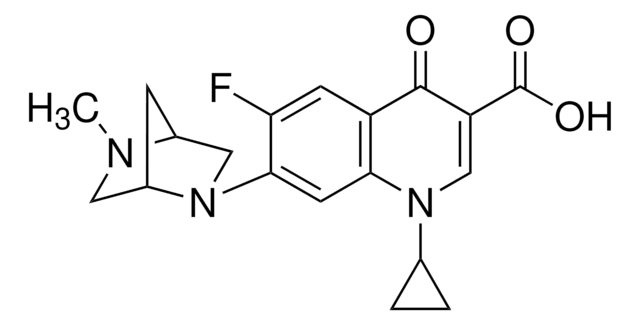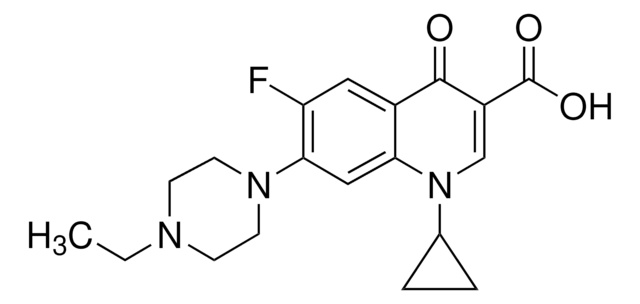すべての画像(3)
About This Item
実験式(ヒル表記法):
C17H19F2N3O3 · HCl
CAS番号:
分子量:
387.81
MDL番号:
UNSPSCコード:
51282927
PubChem Substance ID:
NACRES:
NA.85
おすすめの製品
由来生物
synthetic
色
white to off-white
抗生物質活性スペクトル
Gram-negative bacteria
Gram-positive bacteria
作用機序
DNA synthesis | interferes
enzyme | inhibits
保管温度
−20°C
SMILES記法
Cl.CCN1C=C(C(O)=O)C(=O)c2cc(F)c(N3CCNC(C)C3)c(F)c12
InChI
1S/C17H19F2N3O3.ClH/c1-3-21-8-11(17(24)25)16(23)10-6-12(18)15(13(19)14(10)21)22-5-4-20-9(2)7-22;/h6,8-9,20H,3-5,7H2,1-2H3,(H,24,25);1H
InChI Key
KXEBLAPZMOQCKO-UHFFFAOYSA-N
詳細
Chemical structure: fluoroquinolone
アプリケーション
Lomefloxacin is a fluoroquinolone antibiotic that is commonly used to treat bacterial infections, including bronchitis and urinary tract infections. It is used as a pre-operative prophylactic to prevent urinary tract infection caused by S. pneumoniae, H. influenzae, S. aureus, P. aeruginosa, E. cloacae, P. mirabilis, C. civersus, S. asprphyticus, E. coli, and K. pneumoniae. It is used to induce genomic instability in mice and modification of the kinetics of growth of Gram-negative bacteria.
生物化学的/生理学的作用
Lomefloxacin is a bactericidal fluoroquinolone agent that is active against gram-negative and gram-positive organisms. Lomefloxacin inhibits bacterial DNA gyrase (topoisomerase II) and topoisomerase IV, which are needed for the transcription and replication of bacterial DNA. DNA gyrase is thought to be the primary quinolone target for gram-negative bacteria. Topoisomerase IV is thought to be the primary target in gram-positive organisms. The inhibition of the topoisomerases results in strand breakage of the bacterial chromosome, supercoiling, and resealing. Therefore, DNA replication and transcription is inhibited.
適用法令
試験研究用途を考慮した関連法令を主に挙げております。化学物質以外については、一部の情報のみ提供しています。 製品を安全かつ合法的に使用することは、使用者の義務です。最新情報により修正される場合があります。WEBの反映には時間を要することがあるため、適宜SDSをご参照ください。
Jan Code
L2906-VAR:
L2906-10G:
L2906-BULK:
L2906-1G:
この製品を見ている人はこちらもチェック
Yiruhan et al.
Environmental pollution (Barking, Essex : 1987), 158(7), 2350-2358 (2010-05-04)
Four fluoroquinolone antibiotics (norfloxacin, ciprofloxacin, lomefloxacin, and enrofloxacin) in tap water in Guangzhou and Macao were analyzed using high performance liquid chromatography fluorescence detection. The results showed that all target antibiotics were detected in high rate both in Guangzhou (77.5%)
Yongnian Ni et al.
The Analyst, 134(9), 1840-1847 (2009-08-18)
Three commonly used fluoroquinolone antibiotics (norfloxacin (NFX), ofloxacin (OFX) and lomefloxacin (LMFX)) were used as examples of molecules which can interact with a biomacromolecule, such as DNA, separately or in a mixture. Such interactions were investigated with the use of
Yoko Yoshihisa et al.
Experimental dermatology, 19(11), 1000-1006 (2010-09-04)
Intracellular reactive oxygen species (ROS) and apoptosis play important roles in the ultraviolet (UV)-induced inflammatory responses in the skin. Metal nanoparticles have been developed to increase the catalytic activity of metals, which is because of the large surface area of
Maria Rambla-Alegre et al.
Journal of chromatography. B, Analytical technologies in the biomedical and life sciences, 877(31), 3975-3981 (2009-10-27)
A sensitive and robust method was developed and validated for the routine identification and quantification of five quinolones in urine samples directly injected into a micellar liquid chromatographic system without any pre-treatment step. Since the simultaneous elution of the five
H Pruul et al.
The Journal of antimicrobial chemotherapy, 25(1), 91-101 (1990-01-01)
The post-antibiotic effect (PAE) of lomefloxacin against Escherichia coli and Pseudomonas aeruginosa was determined and compared with various other antibiotics. All the quinolones tested, and chloramphenicol and gentamicin, possessed PAE activity. At 10 x MIC and 30 min exposure, the
ライフサイエンス、有機合成、材料科学、クロマトグラフィー、分析など、あらゆる分野の研究に経験のあるメンバーがおります。.
製品に関するお問い合わせはこちら(テクニカルサービス)